187 books about Volume 2 and 8
start with H
187 books about Volume 2 and 8
187 books about Volume 2
8 start with H start with H
8 start with H start with H

Handbook of Antenna Design, Volume 2
A.W. Rudge
The Institution of Engineering and Technology, 1983
- Authored by a multi-national group of antenna experts of international standing.
- Presents the principles and applications of antenna design, with emphasis upon key developments in the last 15 years.
- Fundamental background theory and analytical techniques explained in detail where appropriate.
- Includes extensive design data and numerous examples of practical application.
- Deals with a very wide range of antenna types, operating from very low frequencies to millimetre waves.
- New measurement techniques described in detail.
- Covers associated topics such as radomes, array signal processing and coaxial components.
- Includes design data for antennas for satellite and terrestrial communications, radar, mobile communications and broadcasting.
[more]

Handbook of Microstrip Antennas, Volume 2
J.R. James
The Institution of Engineering and Technology, 1989
This book presents a wide ranging coverage of principles, state-of-the-art design and up-to-date applications of microstrip antennas; Includes detailed explanations of a variety of analytical techniques from transmission line theory to moments methods and their applications to CAD; Covers the numerous patch designs and array configurations giving many examples of practical applications; Discusses microstrip technology in detail including substrates, processing and environmental aspects; Addresses measurement methods particular to printed antennas such as substrate and connector characterisation and near field probing; Application areas covered include antennas for satellite terrestrial and mobile communications, conformal and aerospace antennas, phased arrays, hyperthermia applicators and millimetric antennas.
[more]
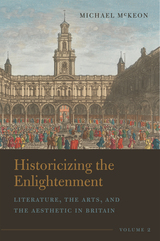
Historicizing the Enlightenment, Volume 2
Literature, the Arts, and the Aesthetic in Britain
Michael McKeon
Bucknell University Press, 2023
Enlightenment critics from Dryden through Johnson and Wordsworth conceived the modern view that art and especially literature entails a double reflection: a reflection of the world, and a reflection on the process by which that reflection is accomplished. Instead “neoclassicism” and “Augustanism” have been falsely construed as involving a one-dimensional imitation of classical texts and an unselfconscious representation of the world. In fact these Enlightenment movements adopted an oblique perspective that registers the distance between past tradition and its present reenactment, between representation and presence. Two modern movements, Romanticism and modernism, have appropriated as their own these innovations, which derive from Enlightenment thought. Both of these movements ground their error in a misreading of “imitation” as understood by Aristotle and his Enlightenment proponents. Rightly understood, neoclassical imitation, constitutively aware of the difference between what it knows and how it knows it, is an experimental inquiry that generates a range of prefixes—“counter-,” “mock-,” “anti-,” “neo-”—that mark formal degrees of its epistemological detachment. Romantic ideology has denied the role of the imagination in Enlightenment imitation, imposing on the eighteenth century a dichotomous periodization: duplication versus imagination, the mirror versus the lamp. Structuralist ideology has dichotomized narration and description, form and content, structure and history. Poststructuralist ideology has propounded for the novel a contradictory “novel tradition”—realism, modernism, postmodernism, postcolonialism—whose stages both constitute a sequence and collapse it, each stage claiming the innovation of the stage that precedes it.
Published by Bucknell University Press. Distributed worldwide by Rutgers University Press.
Published by Bucknell University Press. Distributed worldwide by Rutgers University Press.
[more]
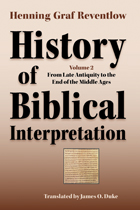
History of Biblical Interpretation, Volume 2
From Late Antiquity to the End of the Middle Ages
Henning Graf Reventlow
SBL Press, 2010
Volume 2 of History of Biblical Interpretation deals with the most extensive period under examination in this four-volume set. It begins in Asia Minor in the late fourth century with Bishop Theodore of Mopsuestia, the founder of a school of interpretation that sought to accentuate the literal meaning of the Bible and thereby stood out from the tradition of antiquity. It ends with another outsider, a thousand years later in England, who by the presuppositions of his thought stood at the end of an era: John Wyclif. In between these two interpreters, this volume presents the history of biblical interpretation from late antiquity until the end of the Middle Ages by examining the lives, works, and interpretive practices of Didymus the Blind, Jerome, Ambrose, Augustine, Gregory the Great, Isidore of Seville, the Venerable Bede, Alcuin, John Scotus Eriugena, Abelard, Rupert of Deutz, Hugo of St. Victor, Joachim of Fiore, Thomas Aquinas, Bonaventure, Rashi, Abraham ibn Ezra, and Nicolas of Lyra.
[more]

History of International Broadcasting, Volume 2
James Wood
The Institution of Engineering and Technology, 2000
The first volume of History of International Broadcasting (1992) traced the history of radio broadcasting, chiefly on the short waves, from its earliest origins to its role as an instrument of foreign policy in World War II and into the cold war. This volume documents the role of the West's international broadcasters - such as Voice of America, Radio Free Europe/Radio Liberty and the BBC World Service - in using propaganda and other information to assist in bringing about the collapse of Soviet communism and the end of the cold war. It also analyses the new uses to which broadcasting infrastructures are being put, as well as new developments reflecting changes in world politics and culture. Much attention is therefore devoted to broadcasting to and within Asia and the Arabic-Islamic Middle East region, where some of the greatest new investments are being made.
[more]
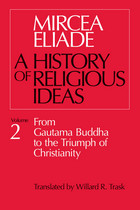
History of Religious Ideas, Volume 2
From Gautama Buddha to the Triumph of Christianity
Mircea Eliade
University of Chicago Press, 1982
In volume 2 of this monumental work, Mircea Eliade continues his magisterial progress through the history of religious ideas. The religions of ancient China, Brahmanism and Hinduism, Buddha and his contemporaries, Roman religion, Celtic and German religions, Judaism, the Hellenistic period, the Iranian syntheses, and the birth of Christianity—all are encompassed in this volume.
[more]
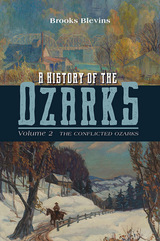
A History of the Ozarks, Volume 2
The Conflicted Ozarks
Brooks Blevins
University of Illinois Press, 2019
The Ozarks of the mid-1800s was a land of divisions. The uplands and its people inhabited a geographic and cultural borderland straddling Midwest and west, North and South, frontier and civilization, and secessionist and Unionist. As civil war raged across the region, neighbor turned against neighbor, unleashing a generation of animus and violence that lasted long after 1865. The second volume of Brooks Blevins's history begins with the region's distinctive relationship to slavery. Largely unsuitable for plantation farming, the Ozarks used enslaved persons on a smaller scale or, in some places, not at all. Blevins moves on to the devastating Civil War years where the dehumanizing, personal nature of Ozark conflict was made uglier by the predations of marching armies and criminal gangs. Blending personal stories with a wide narrative scope, he examines how civilians and soldiers alike experienced the war, from brutal partisan warfare to ill-advised refugee policies to women's struggles to safeguard farms and stay alive in an atmosphere of constant danger. The war stunted the region's growth, delaying the development of Ozarks society and the processes of physical, economic, and social reconstruction. More and more, striving uplanders dedicated to modernization fought an image of the Ozarks as a land of mountaineers and hillbillies hostile to the idea of progress. Yet the dawn of the twentieth century saw the uplands emerge as an increasingly uniform culture forged, for better and worse, in the tumult of a conflicted era.
[more]
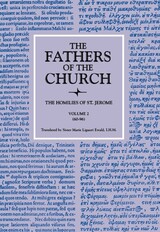
The Homilies of Saint Jerome, Volume 2
Saint Jerome
Catholic University of America Press, 1966
This volume of the Homilies of Saint Jerome contains fifteen homilies on Saint Mark's Gospel, Homilies 75-84.
[more]
READERS
Browse our collection.
PUBLISHERS
See BiblioVault's publisher services.
STUDENT SERVICES
Files for college accessibility offices.
UChicago Accessibility Resources
home | accessibility | search | about | contact us
BiblioVault ® 2001 - 2024
The University of Chicago Press









